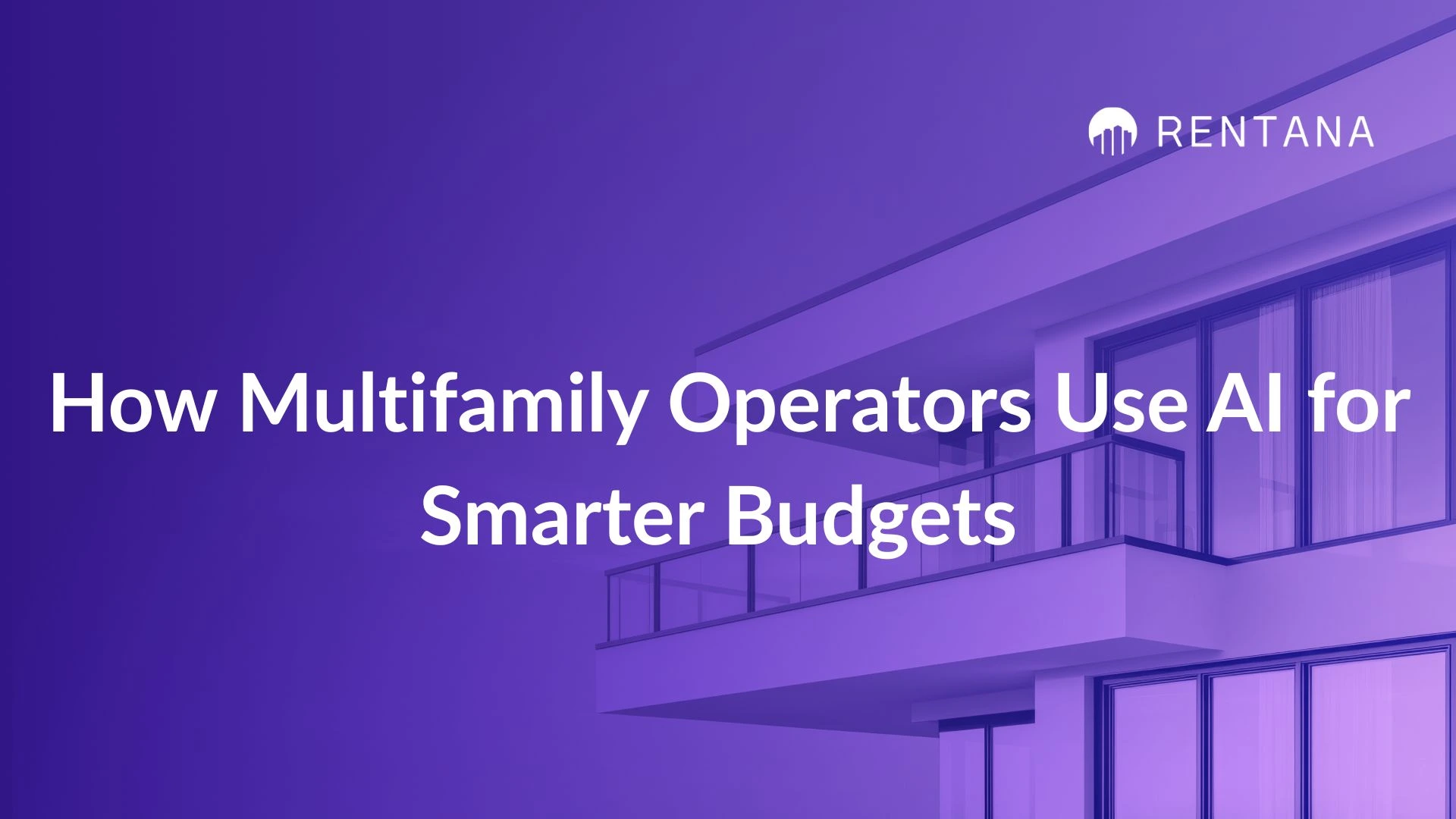




Budget season is here, and the pressure is real. New tools can make management and NOI expansion more streamlined this year.
Goldman Sachs projects residential investment down 8% year-over-year, sharpening the focus on accuracy in 2026 budgets. At the same time, national occupancy has held at 94.7%, even as supply sits at multi-decade highs.
On the surface, stability looks good. Under the hood, though, rent growth is flat, concessions are climbing, and investors want clarity.
No need to panic. AI analytics can help.
These analytics tools give operators a clear view of the details others might overlook, allowing them to create budgets that accurately reflect the property's actual state. This approach is the opposite of blindly projecting growth, and it’s the key to a smooth 2026 budget that won’t fall off the rails by March.
At the national level, multifamily occupancy has held steady at just under 95%. It’s a testament to strong absorption despite continued elevated deliveries and proof that demand is not the problem.
However, rent growth has been essentially flat for nearly two years. August figures continued the pattern of +0.7% year-over-year. It’s the same sluggish pace we’ve seen for the past 20 months.
Concessions tell the real story of competition. Nationally, stabilized properties are offering an average discount of 10% on rent premiums, or approximately five weeks free. In some Florida metro areas, this is even higher, with up to eight weeks free. That’s not about affordability. It’s about operators in supply-heavy markets fighting to capture leases.
This environment creates a budgeting paradox: occupancy is resilient, but revenue is under pressure. A flat or negative rent-growth assumption might be right for one property, while a renewal strategy with concessions is essential for another.
For multifamily operators, the challenge is less about “growth or no growth” and more about where to invest, when to invest, and what to expect in return.
Traditional budgeting often leans on broad assumptions. A manager might assume 2% growth, leading to a straightforward forecast for the property. But when demand, concessions and renewals vary so widely, those assumptions can miss reality by a considerable margin.
Think about a 300-unit property with an average monthly rent of $1,500. A 1% change in rent assumptions equals $54,000 per year. When budgets rely on averages rather than detailed unit-level analysis, operators risk missing out on real money and surprising owners when things don’t go to plan.
Expenses add another level of complexity. Cutting OpEx in the short term can lead to higher CapEx down the line. For example, if a parking lot is in disrepair and needs some potholes fixed, it might end up getting a complete overhaul and repaving instead. Shelling out for this expense could decrease overall profitability.
The real value of AI analytics isn’t in producing more dashboards. It’s in surfacing actionable insights that guide better decisions.
AI models can predict which residents are most likely to renew, allowing multifamily operators to make earlier renewal offers and secure occupancy before leases end. This helps lower vacancy risk and ensures a steady flow of revenue.
Instead of waiting until renewal season to see the real cost of free rent offers, AI analytics tracks concession burn-off in real time. This helps operators forecast effective rent increases and evaluate renewal risks, avoiding double-digit jumps that residents can’t afford.
Not every upgrade pays off equally. Predictive tools help identify which amenities actually improve resident satisfaction and increase rent, whether it’s package lockers, outdoor spaces, or unit-level upgrades. This ensures CapEx is invested where it yields measurable returns.
AI-driven trend analysis spots early warning signs in operating expenses. If maintenance costs are drifting above budget, predictive tools can flag the issue before it snowballs, so multifamily operators can protect NOI and reduce the likelihood of major CapEx events later.
AI analytics don’t eliminate the uncertainty of budgeting, but they can significantly reduce the guesswork. Instead of broad assumptions, operators can build roadmaps based on:
No model can deliver a perfect forecast. However, AI-assisted budgeting comes very close, offering a realistic and defensible budget that balances investor confidence with operational flexibility.

Budgeting for 2026 isn’t about chasing rent growth. With supply elevated and concessions at decade highs, the operators who succeed will be the ones using predictive tools to capture steady gains and invest capital with precision.
Occupancy may be stable, but competition is intense. Rent growth is muted, yet NOI upside is within reach. The difference comes down to how clearly you can see the details.
AI analytics are a practical lever that helps multifamily operators move beyond averages, avoid surprises, and build budgets that withstand reality. It offers the edge ownership is looking for.
With Rentana, multifamily teams get real-time insights designed to increase NOI in weeks, not months. Purpose-built for multifamily, Rentana delivers clarity and market visibility that generic tools can’t match. In a recent pilot, Rentana boosted property value by $4.6M and cut onboarding time by 21x.
Want to learn more about Rentana?